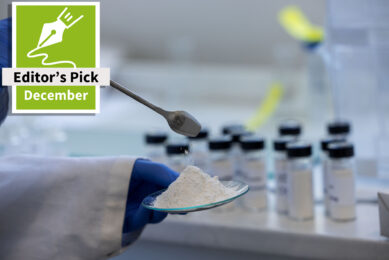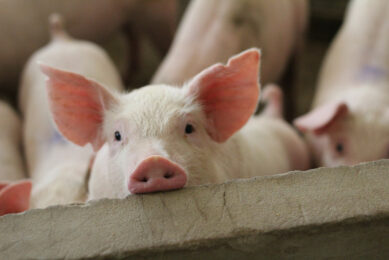The many faces of phosphorus
Mineral nutrition contains all the classic elements for nutrition research- requirements may be increased or decreased on the basis of sound scientific knowledge, whilst in practice, legislation is ever tightening on use. This means that efficiency of supply, through product form or improved models, is paramount for all species.
EXTRA STEP REMOVES INTERFERENCE
When we discuss phosphorus supply nowadays, it is rare not to mention phytase. Researchers at Cornell University, Ithaca, US, have developed an improved method for rapid determination of the phytase activity of a finished feed or of feed ingredients. The current colorimetric assay is hindered by the high background levels of phosphorus in feed among other factors. Jin Wook Kim’s method uses a spin column step to remove inorganic phosphates from the aqueous phase, which is then subjected to the colorimetric assay for phytase. This modified assay was found to be more accurate and more reproducible than the direct method, detecting levels of phytase activity as low as 10 units/kg.
Contact: Jin Wook Kim, Department of Animal Science, Cornell University, Ithaca, US; email: jk133@cornell.edu
Reference: Kim and Lei (2004). An improved method for the rapid determination of phytase activity in animal feeds. In Poultry Science Volume 83, Supplement 1. Proceedings of the ADSA, ASAS and PSA Joint Meeting, St. Louis, Missouri, July 25-29; p. 330.
A DYNAMIC PHOSPHORUS MODEL FOR SALMONIDS
Dominique Bureau and his group at the University of Guelph’s Fish Nutrition Research Lab are well known for their work on salmonid nutrition. Kathleen Hua’s PhD studies have culminated in a dynamic simulation of phosphorus utilisation in salmonid fish that can be used in formulating strategies to improve production efficiency and P waste output. Hua’s model takes into account the variation in digestibility of the different forms of phosphorus available, fitting it into a dynamic model using digestion, body deposition and urinary and faecal excretion. The most sensitive parameters affecting P excretion in the model were found to be related to body deposition and urinary excretion. The model proved effective in simulating the effects of dietary P sources and levels on P digestibility, retention, solid (faecal) and soluble (urinary) waste output.
Contact: Kathleen Hua, PhD student, Fish Nutrition Research Laboratory, Department of Animal and Poultry Science, University of Guelph, Guelph, Ontario N1G 2W1, Canada; email: k@uoguelph.ca; or Dominique Bureau, Assistant Professor. Email: dbureau@uoguelph.ca
Reference: Hua, Cant and Bureau (2004). Dynamic simulation of phosphorus utilisation in salmonid fish. In Abstracts of the Sixth International Workshop on Modelling Nutrient Utilisation in Farm Animals. September 6-8, Wageningen, The Netherlands.
DISTILLERS’ GRAINS AS A PHOSPHORUS SOURCE
Byproducts from the food and drinks industry can be valuable nutrient sources for feed formulation. Many, including distiller’s dried grains are already used as an energy source in diets for pigs or cattle, but may also be valuable in diets for poultry. Research conducted at Michigan State University suggests that distiller’s dried grains plus solubles may in fact be a more digestible source of phosphorus for growing turkeys than inorganic sources and thus worthy of inclusion in their diets, where their availability makes them an economically favourable option.
The results of two experiments conducted at Michigan State University by Jayne Kalbfleisch and Kevin Roberson showed that when isoenergetic, isonitrogenous diets with a constant calcium level (1.2%) were formulated using either dicalcium phosphate or varying levels of distiller’s dried grains and solubles (DDGS) to supplement the basal diet’s phosphorus content to increasing levels of non-phytate (nPP) or total (TP) phosphorus. In both experiments, P availability was found to be greater when DDGS was used than when phosphorus was supplied as dicalcium phosphate, whether the P content of the ration was based on nPP or TP.
Contact: Jayne Kalbfleisch, Department of Animal Science, Michigan State University, email: kalbfle7@msu.edu.
Reference: Kalbfleisch and Roberson. Phosphorus availability of distiller’s dried grains plus solubles for male turkey poults. In Poultry Science Volume 83, Supplement 1. Proceedings of the ADSA, ASAS and PSA Joint Meeting, St. Louis, Missouri, July 25-29; p. 319











